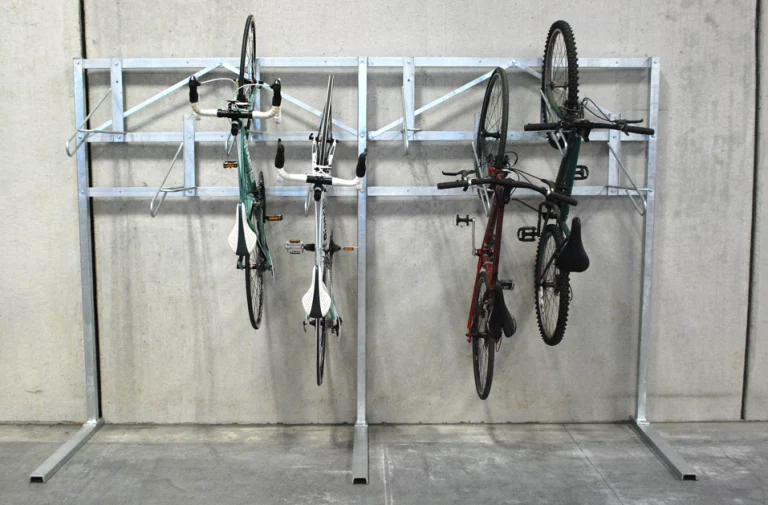In the ever-evolving landscape of urban living, space optimization and sustainable transportation solutions have become crucial concerns. The rise of cycling as a preferred mode of transport has sparked innovative solutions to address these challenges.
One such innovation that’s making waves is the utilization of vertical bike racks. These racks are proving to be game-changers, transforming the way cities approach bike parking and contributing to the creation of more livable, bike-friendly urban spaces.
Maximizing Space Utilization
Urban environments often grapple with limited space, making efficient utilization a top priority. Vertical bike racks provide an ingenious solution to this problem by capitalizing on unused vertical spaces.
By storing bikes in a vertical orientation, these racks occupy significantly less ground space compared to traditional horizontal racks. This not only leaves room for other essential amenities but also allows for increased bike storage capacity in the same area.
Promoting Sustainable Transportation
The importance of sustainable transportation cannot be overstated in today’s world. Bicycles offer an eco-friendly alternative to cars, reducing carbon emissions and traffic congestion. Vertical bike racks play a crucial role in encouraging more people to adopt cycling by addressing the issue of secure bike parking. This convenience encourages commuters to choose bikes over cars for short trips, contributing to cleaner air and healthier urban environments.
Enhancing Aesthetics and Urban Design
The visual impact of a well-designed urban space goes beyond functionality. Vertical bike racks not only serve as practical installations but also enhance the overall aesthetics of an area.
With sleek and modern designs, these racks add an element of sophistication to public spaces, promoting a positive urban experience. Integrating functional bike racks with appealing design elements can transform mundane locations into vibrant hubs of activity.
Improving Accessibility
Accessibility remains a critical consideration when designing urban spaces. Traditional bike racks can sometimes be cumbersome to use, especially for individuals with physical disabilities or limited mobility.
Vertical bike racks offer a more user-friendly solution, allowing cyclists to effortlessly secure their bikes without needing to lift them off the ground. This inclusivity ensures that biking remains an accessible mode of transportation for everyone.
Preventing Bike Theft
Bike theft is a pervasive concern in urban areas, often dissuading individuals from cycling. Vertical bike racks contribute to better security by providing lockable attachment points for both the frame and the wheel. This reduces the risk of theft and vandalism, assuring cyclists that their bikes will be safe while they go about their daily activities.
Fostering a Bike-Friendly Culture
Vertical bike racks not only offer a practical solution but also send a powerful message about the city’s commitment to promoting cycling. By investing in bike infrastructure, cities encourage a shift toward healthier and more sustainable transportation options. This proactive approach fosters a culture where cycling is seen as a legitimate and respected mode of commuting, ultimately leading to a more bike-friendly urban environment.
Conclusion
Vertical bike racks are revolutionizing urban spaces by addressing critical challenges of space optimization, sustainable transportation, aesthetics, accessibility, and security. As cities strive to become more livable and eco-conscious, these innovative solutions pave the way for a future where cycling plays a central role in urban mobility. By embracing vertical bike racks, cities can create a more vibrant, functional, and inclusive environment that benefits both current and future generations.

